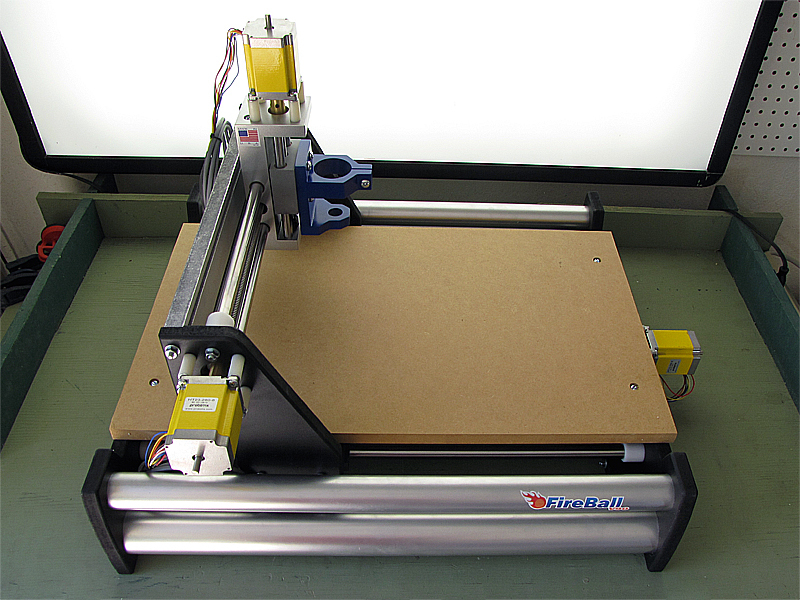Choose the side of the gantry on which you want to mount the short-horizontal-axis stepper motor. Both sides have motor mounting holes, and the choice is only one of convenience. Think about clearances and cable pathways in the place you’re eventually going to be using the robot.
Insert the end of the smaller lead screw without the brass coupling through the hole in the gantry upright on which you plan to mount the motor.
Once the tip of the lead screw is between the gantry uprights, slip a bearing assembly, a nylon washer, and a shaft collar onto it, in that order. Note the correct orientation of the bearing assembly, with the narrower end closest to the gantry upright.
Carefully thread the lead screw through the anti-backlash nut in the Z-axis assembly. The anti-backlash nut ships with a small cardboard tube inside it, which will be pushed out as you thread in the lead screw.
NOTE: Do not attempt to remove the cardboard tube in any other way. Likewise, do not remove the lead screw from the anti-backlash nut once it is threaded through. Without either the tube or the lead screw in place inside the anti-backlash nut, it will fall apart, and can be quite tricky to get back together. See this document for more info.
Once the lead screw is through the anti-backlash nut, slip a shaft collar, a nylon washer, and the other bearing assembly onto its exposed end. Push the lead screw in, sliding the Z-axis assembly with it, until the bearing assembly is secure in the far gantry upright.
Adjust the lead screw such that about 3/4″ of the brass coupling is exposed outside the gantry. Position the shaft collars close up against the washers and bearings at each end of the lead screw, and use a 7/64″ Allen wrench to tighten them down.


